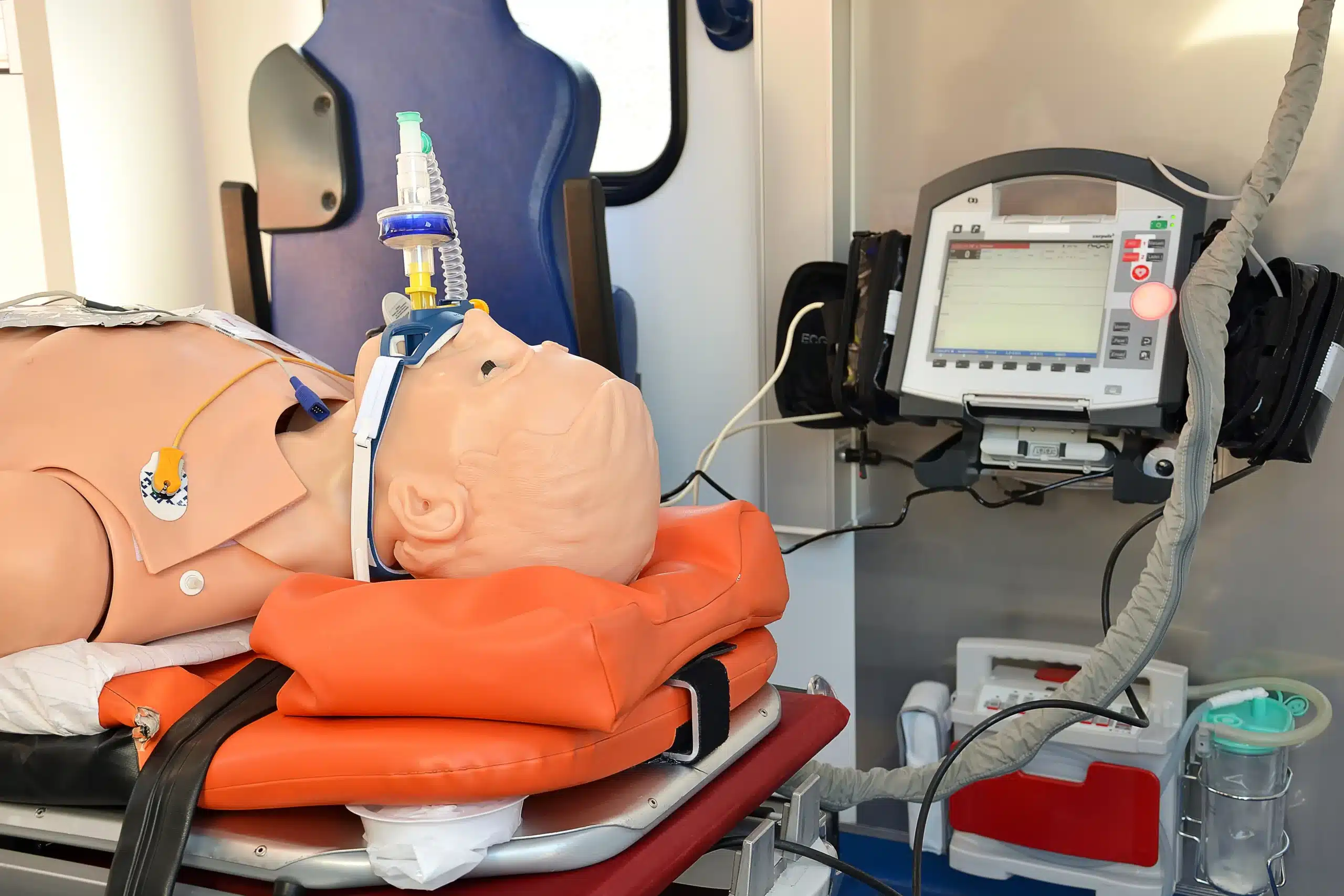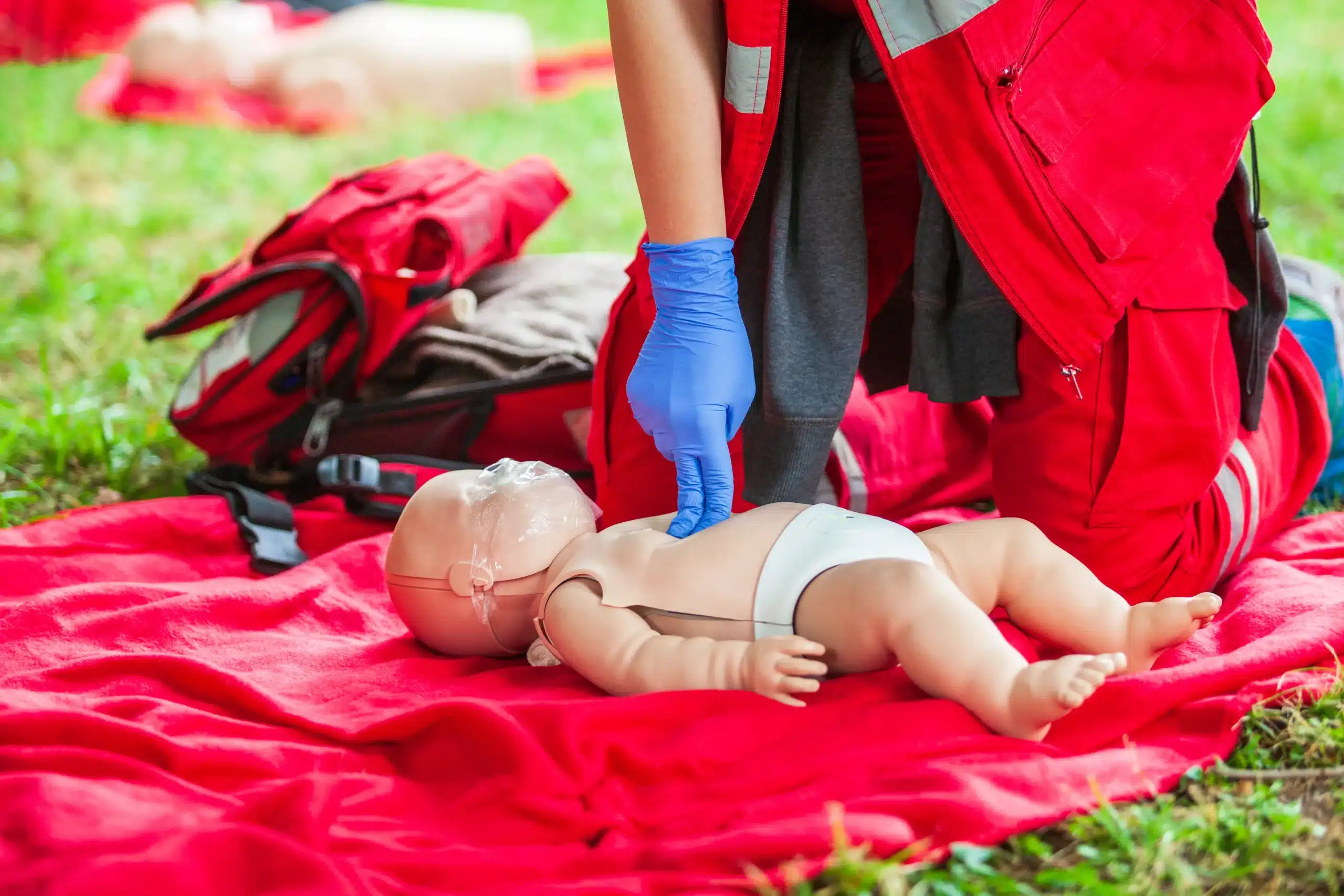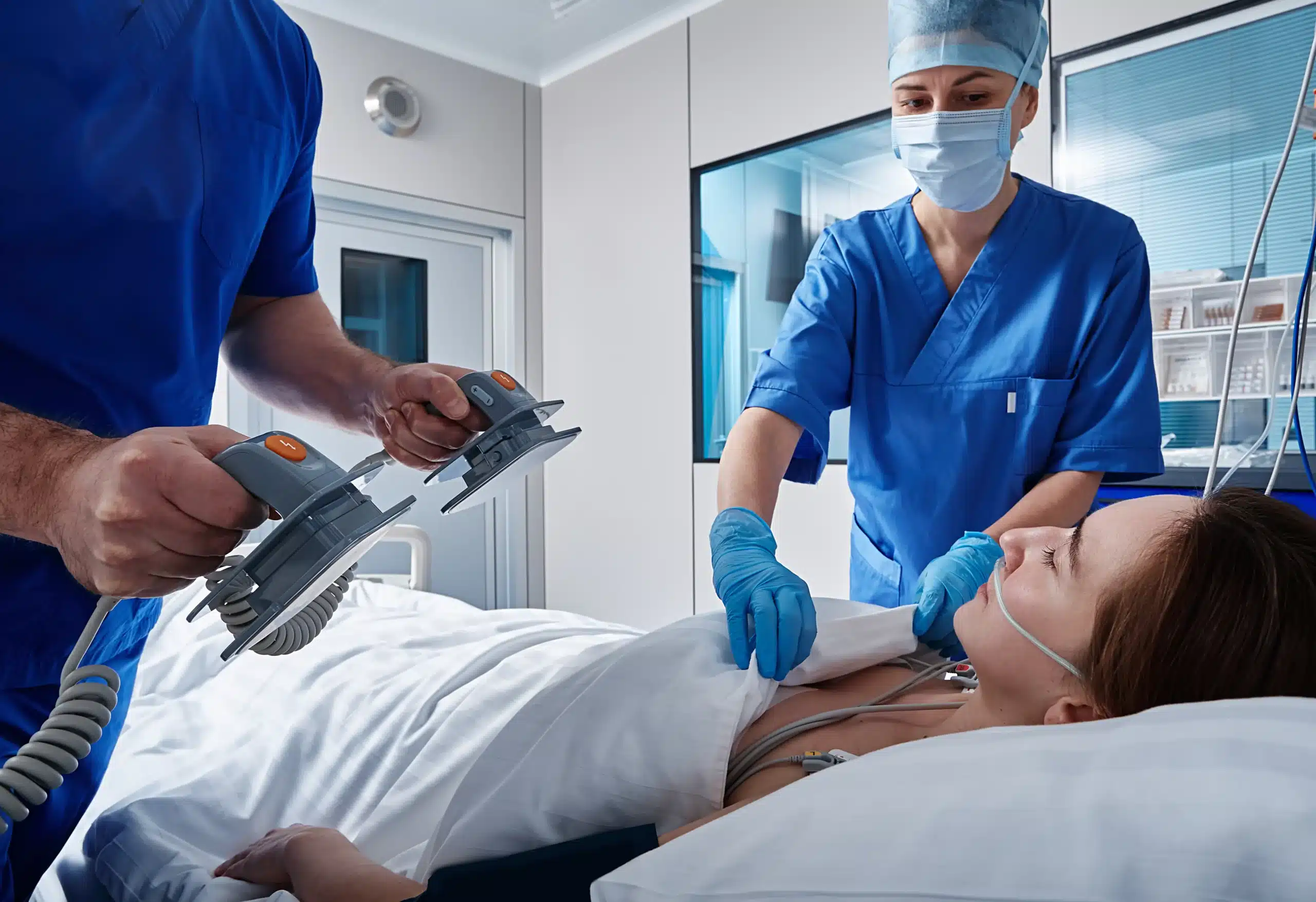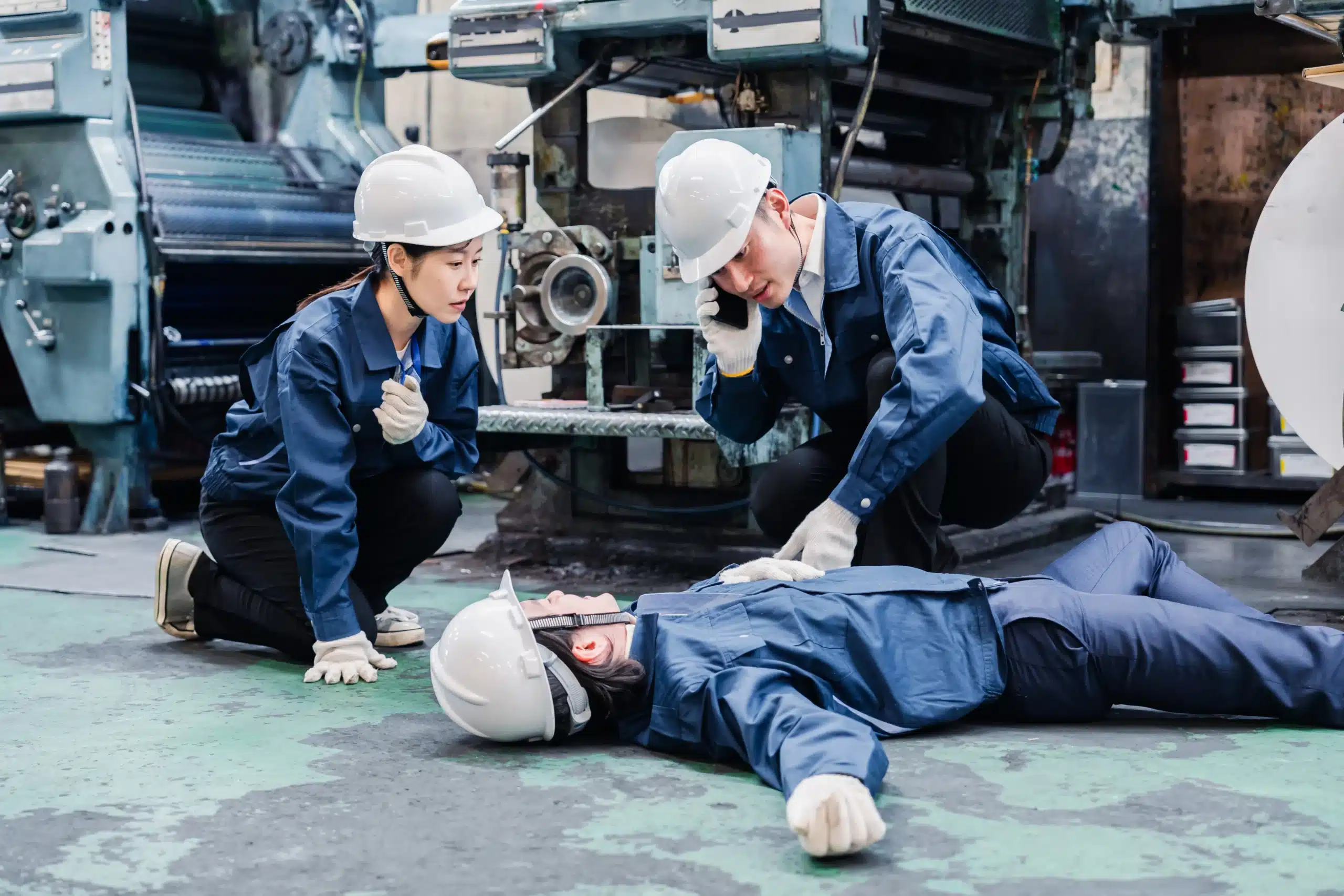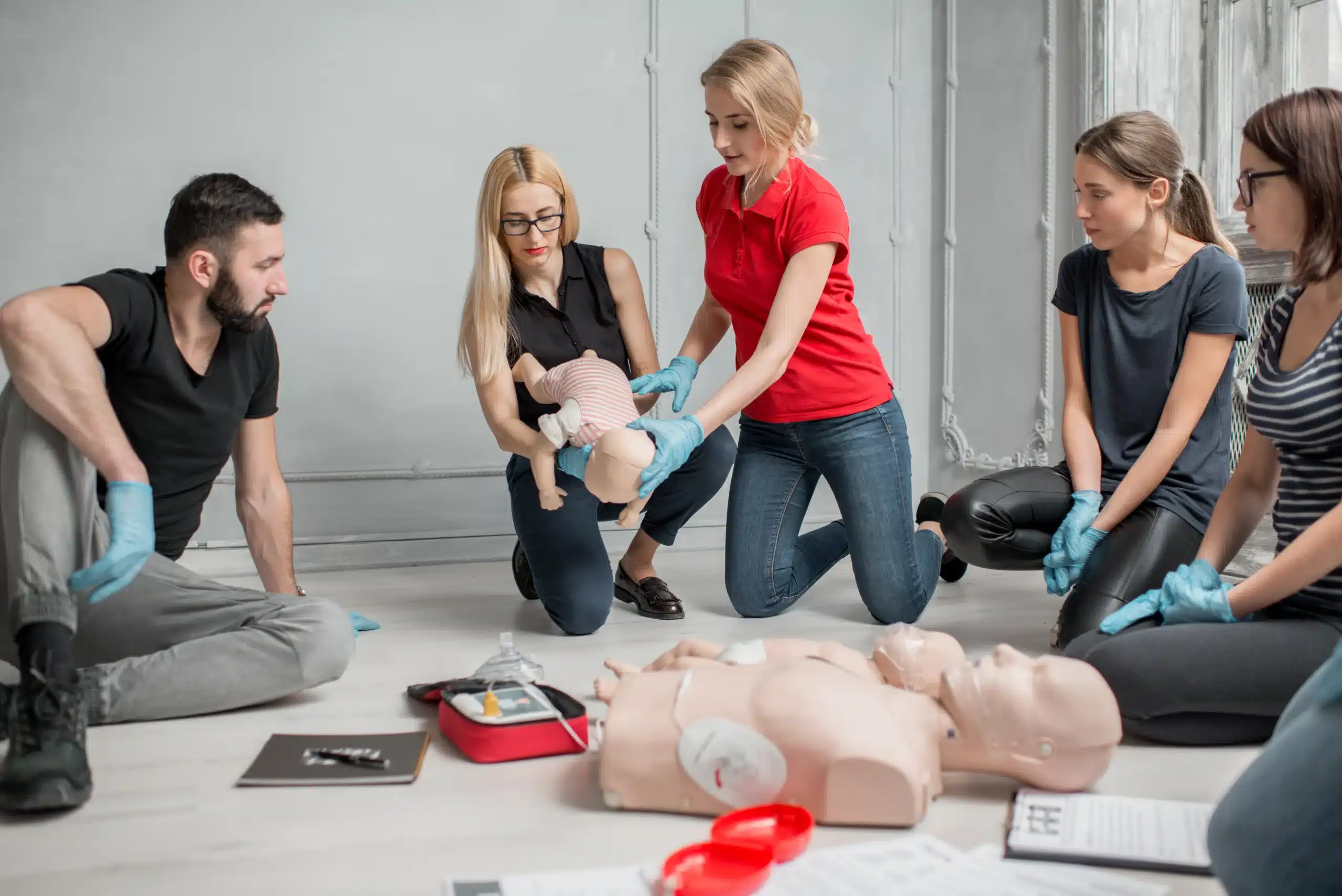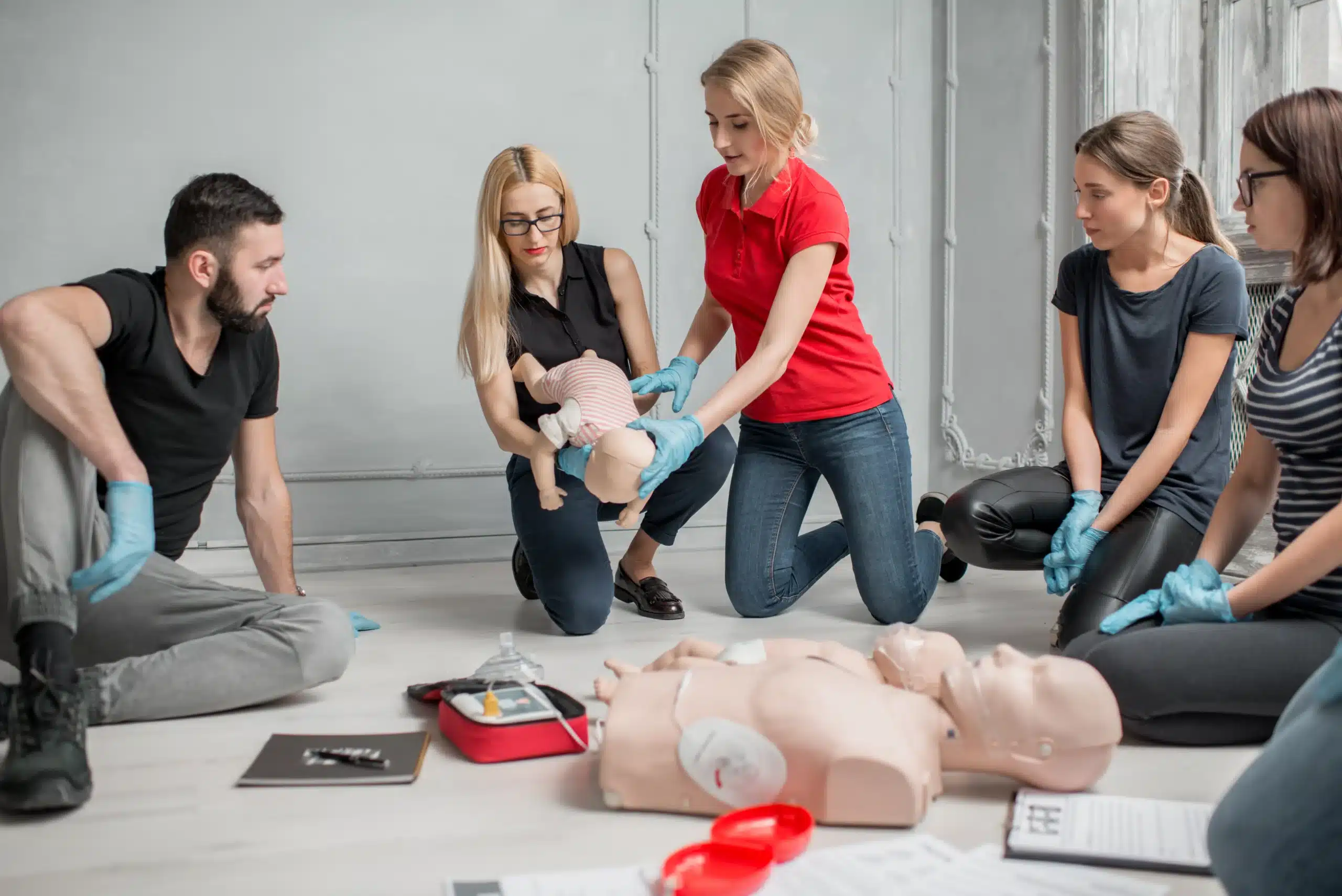Learning CPR can quite literally save a life, and online CPR classes in San Jose make acquiring this essential skill more convenient than ever. Juggling work, family, and other commitments? Online CPR training offers the flexibility to learn life-saving techniques at your own pace, fitting seamlessly into your busy schedule. This approach combines the convenience of online learning with the crucial hands-on practice needed to respond confidently in emergencies. This guide explores the benefits of online CPR certification, dispels common misconceptions, and provides valuable resources for finding top-notch online CPR classes in San Jose.
Key Takeaways
- Online CPR training blends online coursework with hands-on skills sessions, offering flexibility and convenience. This approach lets you learn at your own pace and choose a schedule that works for you, while still getting the practical training you need.
- Different CPR certifications address specific needs and professions. From basic CPR and First Aid to advanced certifications like BLS, ACLS, and PALS, understanding the distinctions helps you select the right course. Consider your personal or professional goals when making your decision.
- Active participation and ongoing practice are key to maximizing your training. Prepare for your online coursework, engage with the material, and ask questions. After certification, continue practicing and seek refresher courses to maintain your skills and confidence.
What Are Online CPR Classes?
Online CPR classes offer a convenient way to learn the lifesaving skills of cardiopulmonary resuscitation. These courses blend online learning with in-person skills sessions. The online portion covers essential CPR knowledge and techniques, allowing you to learn at your own pace, anytime, anywhere. After completing the online modules, you’ll attend a hands-on skills session with a certified instructor to practice and demonstrate your CPR abilities. This blended approach combines the flexibility of online learning with the crucial practical experience needed to confidently respond in emergencies. Many reputable organizations, including the American Heart Association, offer online CPR certification. This format makes CPR training accessible to busy professionals, parents, students, and anyone seeking a flexible learning option. For those in the Milpitas area, you can find more information on online CPR classes in Milpitas.
Benefits of Online CPR Certification
Online CPR training offers several advantages. The flexibility to learn at your own pace and on your own schedule is a major draw. You can review materials as needed and fit the coursework around your other commitments. Online courses are also often more affordable than traditional in-person classes, making them accessible to a wider range of people. The ability to learn from anywhere with an internet connection eliminates the need to travel to a specific training location. This is particularly beneficial for those in rural areas or with limited transportation options. This article compares online versus in-person CPR training and can help you decide which format is right for you.
Common Misconceptions About Online CPR Training
Several myths surround online CPR training. One common misconception is that only healthcare professionals need CPR training. In reality, anyone can benefit from learning CPR. Equipping yourself with these skills empowers you to assist family members, friends, coworkers, or even strangers during a medical crisis. Another myth is that CPR training is prohibitively expensive. Fortunately, many affordable online CPR courses provide excellent value and teach essential, life-saving skills. Some courses even offer group discounts or student rates. Don’t let cost be a barrier to gaining this invaluable knowledge. This article debunks more common CPR myths and clarifies the truths about CPR training. It’s important to remember that online CPR certification is a recognized and valuable credential, enabling you to respond effectively in emergencies.
Top Online CPR Class Providers in San Jose
Finding the right CPR class can feel overwhelming with so many options. To simplify your search, I’ve compiled a brief overview of some leading online CPR class providers in the San Jose area. Remember to confirm program details and ensure the certification aligns with your specific requirements.
American Red Cross
The American Red Cross offers CPR and First Aid training in San Jose, using a blended learning model. Their “Simulation Learning” format combines online coursework with in-person skills sessions, offering flexibility while ensuring you get hands-on practice. Red Cross certifications are generally valid for two years.
CPR Training Center
For those seeking American Heart Association (AHA) certified courses, CPR Training Center provides CPR, BLS, ACLS, PALS, and First Aid instruction throughout San Jose and the Bay Area. They prioritize hands-on learning in a fun, engaging atmosphere.
Milpitas CPR Classes
Milpitas CPR Classes offers various online CPR training options, including the AHA’s RQI program, making them a solid option for medical professionals requiring BLS, ACLS, and PALS certification. They use a blended learning approach, combining online study with in-person skills sessions. They also serve the greater San Jose and Santa Clara areas.
Safety Training Seminars
Safety Training Seminars offers AHA-certified BLS, ACLS, PALS, and CPR training in nearby Milpitas. Their focus is on providing students with the skills to handle emergencies effectively.
ProCPR
ProCPR presents a fully online CPR training program designed for both healthcare professionals and the general public. Their courses emphasize practical CPR skills and knowledge. Keep in mind that fully online CPR certifications may not satisfy all workplace or regulatory requirements, so always verify what your specific situation requires.
Types of Online CPR Classes & What They Cover
Online CPR classes offer flexibility for busy schedules, but choosing the right course is key. Different certifications cater to various needs and professional requirements. Here’s a breakdown of common online CPR class types:
Basic Life Support (BLS)
BLS certification provides the foundational knowledge and skills to respond to life-threatening emergencies. You’ll learn how to perform high-quality CPR for adults, children, and infants, including single-rescuer and team-based CPR techniques. The course also covers AED use, relief of choking, and basic cardiovascular emergencies. BLS certification is vital for healthcare providers and anyone seeking a comprehensive understanding of CPR. It’s also a prerequisite for more advanced certifications like ACLS and PALS.
Advanced Cardiovascular Life Support (ACLS)
ACLS training builds upon the skills learned in BLS, focusing on advanced life-saving techniques for adult victims of cardiopulmonary arrest and other cardiovascular emergencies. This course delves into complex algorithms for managing respiratory and cardiac arrest, including airway management, intravenous access, and pharmacology. ACLS certification is primarily for healthcare professionals like physicians, nurses, and paramedics who manage cardiovascular emergencies.
Pediatric Advanced Life Support (PALS)
PALS certification equips healthcare providers with the specialized knowledge and skills needed to respond to emergencies involving infants and children. The course emphasizes the unique physiological differences between pediatric and adult patients. It covers topics like respiratory distress, shock, and post-resuscitation care. PALS is essential for pediatricians, nurses, paramedics, and other healthcare professionals working with young patients.
First Aid and AED Training
First aid and AED training provides practical skills to manage a wide range of medical emergencies, from minor injuries like cuts and burns to more serious situations like seizures and allergic reactions. You’ll learn how to assess a scene, control bleeding, stabilize injuries, and administer basic first aid until professional help arrives. AED training is often included, teaching you how to use this life-saving device. This combined training is valuable for anyone, regardless of profession, empowering them to respond confidently in emergencies.
Cost & Value of Online CPR Classes
CPR certification is an investment in your skills and ability to respond to emergencies. Let’s break down the costs associated with online CPR classes and explore the value they offer.
Price Ranges for Different Courses
Online CPR class costs vary depending on the level of certification you need. Blended learning CPR classes, which combine online learning with an in-person skills session, generally cost around $99. More specialized certifications, such as Advanced Cardiovascular Life Support (ACLS) or Pediatric Advanced Life Support (PALS), may have different pricing structures. Check with your chosen provider, like the CPR Training Center, for their specific course fees.
Group Discounts and Student Rates
Many CPR training providers offer discounts for group registrations, a smart option for workplaces or community organizations. Some providers also extend discounted rates to allied health students. Look for training centers, such as those offering CPR classes in Milpitas, that provide on-site training at no extra charge. This can be especially helpful for larger groups or those with busy schedules.
Additional Costs (Materials, Certification Fees)
While the core online course usually covers the primary instruction, factor in potential additional costs. Some courses may require you to purchase training materials. Look for deals like free shipping on supplies. Your official CPR certification card is typically issued upon successful completion of the in-person skills check and is usually included in the overall course fee. For complete clarity on any extra costs, confirm details with the training center offering the CPR certification course.
CPR Certification Process & Validity
CPR certification involves a straightforward process designed to equip you with life-saving skills. Understanding the steps, assessment options, and validity period will help you prepare for your training.
Steps to Obtain Certification
Getting your CPR certification typically involves a blend of online learning and in-person skills practice. You’ll begin with the online portion, working through the coursework at your own pace. This allows for flexibility and lets you fit the training around your schedule. Once you’ve completed the online modules, you’ll schedule an in-person skills session. This crucial hands-on component allows you to demonstrate your learned techniques under the guidance of a certified instructor. For a closer look at how online training works, check out our guide to online CPR classes in Milpitas.
Hands-on Skills Assessment Options
While the online portion offers convenience, the hands-on skills assessment requires your physical presence. This practical training is essential for mastering CPR techniques. In-person training provides a valuable opportunity to practice on mannequins, receive real-time feedback from instructors, and build confidence in your abilities. This part of the process ensures you’re fully prepared to respond effectively in a real-life emergency.
Certification Duration and Renewal Requirements
After successfully completing both the online coursework and the in-person skills session, you’ll receive your official CPR certification card. AHA CPR certifications, such as those offered through our BLS CPR course, are valid for two years. To maintain your certification and stay up-to-date with the latest guidelines, you’ll need to renew your training every two years. This ensures your skills remain sharp and you can continue to provide effective assistance when needed.
Choose the Right Online CPR Class
Finding the right online CPR class takes a little research, but it’s worth it. The right certification empowers you to respond to emergencies and potentially save a life. Here’s a breakdown of what to consider:
Factors to Consider
Online CPR training offers flexibility, often combining online coursework with in-person skills sessions. This blended learning lets you learn at your own pace and get certified conveniently. Consider your schedule and learning style. If you enjoy self-directed learning, an online format might be a good fit. If you prefer face-to-face interaction, look for courses with strong in-person components. Think about your location, too. While online coursework is flexible, you’ll need a training center near you for the hands-on portion. Milpitas CPR Classes offers convenient in-person skills sessions in Milpitas, San Jose, and Santa Clara. For busy professionals or those with demanding schedules, the ability to work through the material at your own speed is a major plus.
Match Class Type to Your Needs
Different situations require different CPR certifications. Healthcare providers, for instance, typically need BLS certification, while others may only need CPR and First Aid training. Think about why you’re pursuing certification and choose a class that aligns with your goals. Reach out to training centers directly—they can help you find the best fit. For those who need more advanced training, consider ACLS and PALS courses. Knowing the different options available ensures you select the right course for your specific circumstances.
Evaluate Course Quality and Accreditation
Not all online CPR certifications are the same. Look for courses accredited by reputable organizations like the American Heart Association (AHA). AHA-certified courses follow the latest CPR guidelines and are widely accepted. Consider the course content and how it’s presented. Does it include engaging videos, interactive exercises, and clear explanations? A good online CPR class will equip you with the knowledge and skills you need to respond effectively in an emergency. Check if the program offers additional resources like practice tests or refresher materials to help you retain what you learn. Choosing a high-quality, accredited course ensures you receive comprehensive training that meets industry standards.
Maximize Your Online CPR Training Experience
Online CPR training offers incredible flexibility, but like anything worthwhile, you’ll get out what you put in. A little prep work, smart study habits, and a commitment to ongoing learning will maximize your online CPR training experience.
Prepare for Your Online Course
Online CPR training blends online coursework with in-person skills sessions. This lets you learn the material at your own pace and complete the certification conveniently. Before you begin, gather your materials. You’ll need a reliable internet connection, a quiet workspace, and a notebook to jot down key concepts. Previewing the course materials and creating a study schedule will help you stay organized and manage your time effectively.
Effective Learning Strategies During Class
Several factors can influence how well you absorb information in an online learning environment, including your age, education level, and previous experience. Be honest with yourself about your learning style and adjust your study habits accordingly. Don’t hesitate to reach out to your instructor if you need clarification or extra support. Actively participate in any online discussions or forums—connecting with peers and instructors can significantly boost your understanding and retention.
Post-Certification Resources and Skill Retention
Congratulations on completing your online CPR training! Once you’ve received your American Heart Association (AHA) certification card, make sure you know how to access your digital credentials. Your learning journey doesn’t end there. CPR is a dynamic field, so commit to continuous learning to stay up-to-date on the latest advancements. Look for refresher courses and other resources to keep your skills sharp. Regularly reviewing the material and practicing your techniques will build your confidence and ensure you’re prepared to act in a real-life emergency.
Related Articles
- Online CPR Classes in Milpitas: Your Complete Guide – Milpitas CPR Classes
- Online BLS Classes in Milpitas: Your Complete Guide – Milpitas CPR Classes
- CPR Certification in San Jose: Your Complete Guide – Milpitas CPR Classes
- CPR Courses in San Jose: The Complete Guide – Milpitas CPR Classes
- Debunking Common CPR Myths for Better Preparedness
Frequently Asked Questions
Is online CPR certification as good as in-person training? Online CPR certification blends online learning with required in-person skills sessions. This approach offers flexibility while ensuring you gain the practical experience necessary to perform CPR effectively. You’ll learn the course material online at your own pace and then demonstrate your skills in a hands-on session with a certified instructor. This combination provides a comprehensive learning experience equivalent to traditional in-person training.
What type of CPR certification do I need? The type of CPR certification you need depends on your specific circumstances. If you’re a healthcare provider, BLS certification is typically required. For those seeking a foundational understanding of CPR and first aid, a combined CPR/First Aid course is a great option. More specialized certifications like ACLS and PALS are available for healthcare professionals who need advanced life support training. Consider your profession, personal goals, and any specific requirements when choosing a course. If you’re unsure, contact a CPR training provider—they can guide you toward the right certification.
How long is CPR certification valid, and how do I renew it? CPR certifications, particularly those from the American Heart Association (AHA), are generally valid for two years. Renewal involves retaking the course to refresh your skills and knowledge and ensure you’re up-to-date with the latest guidelines. Regular renewal helps maintain your proficiency and confidence in responding to emergencies.
How much do online CPR classes cost? The cost of online CPR classes varies depending on the type of certification and the training provider. Blended learning CPR and First Aid courses often fall within the $99 range. More specialized certifications like ACLS and PALS may have different pricing. Many providers offer group discounts or student rates, so be sure to inquire about those options. Look for providers who include the in-person skills session and certification card fee in the overall course price to avoid unexpected costs.
What if I have more questions about CPR training? If you have additional questions, reach out to a reputable CPR training provider in your area. They can provide personalized guidance based on your specific needs and help you choose the right course. Many providers offer online resources and FAQs on their websites, which can be valuable sources of information. Don’t hesitate to contact them directly—they’re there to support you on your journey to becoming CPR certified.
